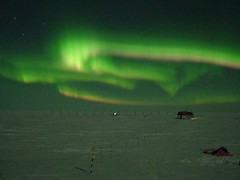The area isn’t new to secessionist movements. They began soon after California (itself born of a secessionist movement of sorts) became a state. While it started as a bit of a stunt, eventually, a few counties took it seriously. There is a core State of Jefferson now, in the minds of people who lived there, or live there, and remember; with the few original states, but some people consider a broader range of counties to be part of it now, because of similarities of politics, economy, demographics, and other factors (even as far to the southwest as Mendocino County, for instance). The modern boundaries of Jefferson are vague, having shifted as the focus of the movement itself shifted from a political gesture to get attention for the area’s development and economic needs to a true (if weakly supported) secession movement, to an attitude, an independent, somewhat libertarian desire for autonomy.
The New York Times reports on a similar historical movement that I hadn’t heard about before, Absaroka:
Hold up the map today that "Governor" Swickard and his compatriots sketched out . . . and the distinctions that made this part of the country feel worthy of statehood in the 1930s — different in its geography, history, economic base and political outlook — are mostly still there.
The undulating landscape of tall grasses that shaped the horsemen and women of the Sioux, Cheyenne and Crow, and the ranchers who came later, is still there, in all its lush exuberance. Economic life shifted gears — coal-bed methane and hobby ranching encroached, sugar beets and flour-milling fell away — but the high grass persists, and that defines the land and the culture — then and now.
"The grass culture — people who make a living from growing grass, or from the animals that eat the grass — that was Absaroka," said Ken Kerns, a 76-year-old rancher who has lived most of his life on the Double Rafter Ranch . . . .
The article goes on to describe the people of the region as "conservative, self-sufficient and wanting mostly to be left alone." This describes the State of Jefferson, as well. It is, in a way, just a utopian movement, for individualist values of "utopia." People want to take care of each other and to use the land the way they see fit, without surrounding (California, Oregon, etc.) laws interfering.



Every time a movement wanders around, before an election, to separate California into more than one state, I think of Jefferson. Sometimes folks want to split California into two states, with the division of the cities and the location of the border moving around depending on who wants to do the splitting. They want Sacramento but not San Francisco, or they want San Francisco but not Los Angeles. Or they want to split it into three, with the rural counties (perhaps with those of the Oregon side of the State of Jefferson) wanting to become self-sufficient, taking care of themselves and the others, and splitting the city folks down below into Central and Southern California.



I can’t imagine this ever truly happening. California is indeed unwieldy, it’s too big. It’s bigger, in size, economy, population, and certainly in arrogance, than many independent nations, and perhaps it would somehow work better split into smaller states – but the ends of the state are so interdependent now that it would be difficult at best.



The environmentalist in me is pretty sure that the State of Jefferson and its northern California neighbors would have a hard time supporting itself without environmentally devastating degrees of resource extraction, but I’d love to be proven wrong.
Links:
The State of Jefferson
Jefferson Public Radio, one of my favorite stations:
Wikipedia on the State of Jefferson
Strange Maps also discusses Absaroka
More images from Jefferson:













